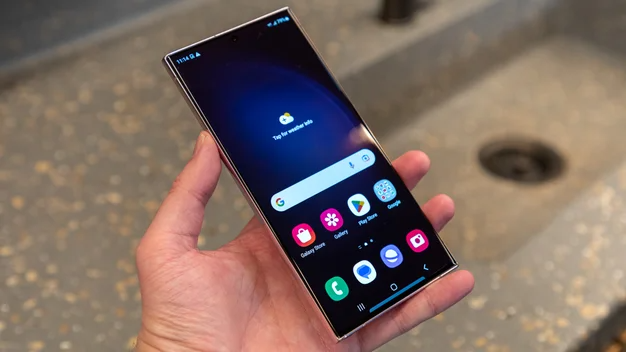What Does the Battery Protection Feature on Samsung Phones Do and Is It Advisable to Enable It
Samsung Galaxy phones offer a feature designed to prolong your battery’s longevity, but is activating it a wise choice?
Important keys
- The “Protect Battery” function found on Samsung smartphones is aimed at extending the battery’s durability by capping the maximum charge at 85%.
- It accomplishes this by mitigating charging wear and shielding against excessive temperatures and voltages, ultimately enhancing the battery’s overall performance.
- The decision of whether to activate “Protect Battery” hinges on your preference for an extended battery life versus optimizing your device’s power capacity.
Every smartphone is equipped with a lithium-ion battery, which comes with a predetermined lifespan measured by the number of complete charge and discharge cycles it can endure before deteriorating. Typically, a standard Li-ion battery has an average lifespan of approximately 300 to 500 charge cycles, equivalent to about two to three years.
For those interested in keeping their phone functional for an extended period, Samsung’s Protect Battery feature offers a solution to enhance battery longevity. In the following discussion, we delve into the details of what Protect Battery entails, its activation process, and whether it’s advisable to enable this feature.
What does “Protect Battery” mean?
Protect Battery is a battery management system (BMS) featured in Samsung smartphones running One UI 4.0 (Android 12) or newer versions. Its function involves capping the battery’s maximum charge at 85% in order to extend the overall battery lifespan.
You might be curious about how limiting the battery’s capacity contributes to its longevity, but the scientific rationale behind the Protect Battery feature is quite sound.
To understand this better, it’s crucial to clarify the concept of a complete charge cycle. It essentially entails a full charge, taking the battery to 100%, followed by a complete discharge, depleting it to 0%. Once a charge cycle is completed, it’s considered consumed and irretrievable. This phenomenon is not a result of any inherent design flaw in battery technology but a fundamental characteristic of all rechargeable batteries. For further insights into charge cycles, you can refer to our guide on checking the battery cycle count for your iPhone.
So, how does Protect Battery prove beneficial? While it’s true that you can’t control the occurrence of charge cycles, which are inevitable as you use your phone and recharge it, there is an optimal point at which charging your battery is more efficient and less detrimental.
By limiting charging to 85%, Protect Battery mitigates the wear caused by charging and optimizes battery performance. In other words, it halts the charging process when it reaches the stage where the battery is most vulnerable to degradation. Additionally, it provides protection against two significant foes of Li-ion batteries – high temperatures and high voltage stemming from a full charge.
Utilizing the Protect Battery Feature
There are two primary methods for enabling Protect Battery on your Samsung smartphone. The first method is straightforward:
1. Pull down on the status bar to reveal the Quick Settings Panel.
2. Swipe down once more to access the Quick Settings Panel fully.
3. Look for the Protect Battery icon within one of the sections on the Panel.
– If you can’t find it there, you can add it by tapping the three-dot icon, selecting “Edit buttons,” and choosing “Protect Battery” from the list of options.
Alternatively, you can activate it through the Settings app:
1. Launch the Settings app and go to “Battery and Device Care.”
2. Tap on “Battery” and scroll down to “More Battery Settings” at the bottom.
3. Turn on the toggle switch next to “Protect Battery.”
For further customization, you can establish a Bixby routine that automatically activates Protect Battery under specific conditions. For instance, you could create a routine that enables Protect Battery while you’re asleep and disables it just before you wake up.
Is It Advisable to Enable Protect Battery?
While Protect Battery offers advantages, it comes with a significant downside: a reduction in your battery’s functional capacity. In essence, it involves trading a larger-capacity battery for an extended lifespan.
So, is it a suitable choice for you? If your primary concern revolves around maximizing your smartphone’s power output, Protect Battery is probably not the best option. However, if you’re comfortable with the idea of potentially needing to invest in a battery replacement or a new phone in two to three years, you can certainly opt not to use this feature.
On the other hand, if your goal is to prolong the life of your phone and battery for as long as possible, then Protect Battery represents a sensible choice.
Protect Battery vs. Enhanced Battery Optimization
Optimized Battery Charging is a battery management feature found in iOS 13 and later, sharing a similar objective with Protect Battery. Its purpose is to enhance the longevity of your battery by reducing the duration it remains at full charge. Unlike Protect Battery, it leverages machine learning to identify periods when your device is likely to be connected to the charger for an extended duration. The algorithm’s goal is to ensure that your battery remains fully charged when you unplug it.
There isn’t a definitive “better” approach; it ultimately depends on your preferences. Essentially, you could substitute Apple’s algorithm with a Bixby routine, and you wouldn’t notice any distinction.






